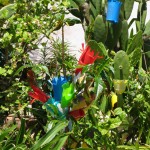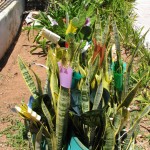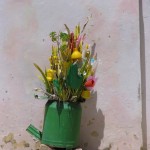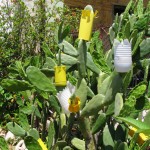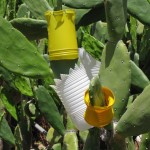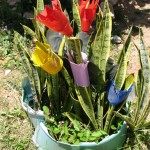
To accumulate is to foresee our anticipated needs and to respond in advance.
Accumulation is not storage, but the collection of ideas of use, of constructive solutions, of technical systems and archetypes that flourish during a crisis.
By accumulating, we create a mental map of what is stockpiled, an echo of the potential of each object or saved fragment.
Accumulation proposes a new rhythm of grass-roots production practices, and this new tempo gives it the character of a parallel productive phenomenon.
To repair or reuse is to reexamine the object and its industrial culture from an artisanal perspective.
Accumulating broken artifacts is handwork that pushes “the industrial” to the realm of the popular crafts. These actions remove the distinctions between TVs, stones and seeds.
Accumulation is not a passive act—it is creative. It sparks this parallel production in precarious contexts.
By accumulating objects or their parts, and because we trust their potential, we push these objects and parts into a new category: object as raw material.
By accumulating an object or its parts, the time of disposal is deferred, as we bypass the life cycle assigned by the designer, the industry or the market.
Any object can be reused, even in a different context than that for which it was designed.
When using a branch to reach a piece of fruit, or a book to buttress a piece of furniture, the rhetorical values of the employed object are unimportant.
When you need to prop a door open with a stone, only its weight is important.

Acumular es prever, es prefigurar y responder con antelación a nuestras necesidades.
Acumular no es guardar cosas, es acopiar ideas de uso, soluciones constructivas, sistemas técnicos y arquetipos que florecerán durante una crisis.
Al acumular creamos un mapa mental de lo acopiado, un eco de las potencialidades de cada objeto o fragmento guardado.
La acumulación propone un nuevo ritmo a las prácticas productivas familiares y este tempo nuevo que las rige les otorga el caracter de un fenómeno productivo paralelo.
Al reparar y reusar revisamos al objeto y a la cultura industrial desde una perspectiva artisanal.
Acumular artefactos rotos es un gesto manual que empuja “lo industrial” al realmo popular de las manualidades, evacuando las distinciones entre el TV, la piedra y la semilla.
La acumulación no es un acto pasivo, es creativo. Es la acción que inicia la producción familiar en contextos precarios.
Al acumular objetos o partes de estos, porque nos fiamos de sus potencialidades, los reunimos bajo una categoría nueva: objeto-materia prima.
Al acumular un objeto o sus partes, se aplaza el momento de su desecho, se elude el ciclo de vida asignado por el diseñador, la industria o el mercado.
Todo objeto puede ser reusado, incluso en un contexto diferente a aquel para el cual fue diseñado.
Al usar una rama para alcanzar un fruto, o un libro para calzar un mueble no importan los valores retóricos del objeto empleado.
Cuando se necesita dejar la puerta abierta, con una piedra, solo importa su peso.
